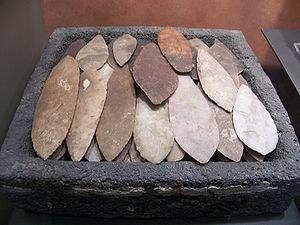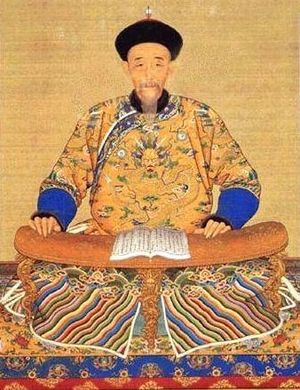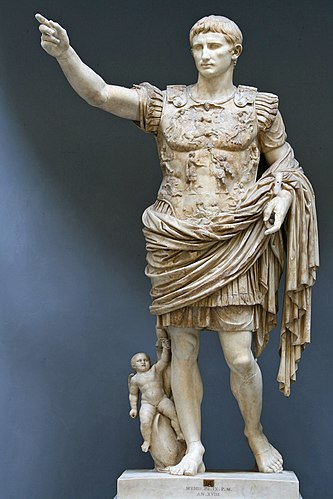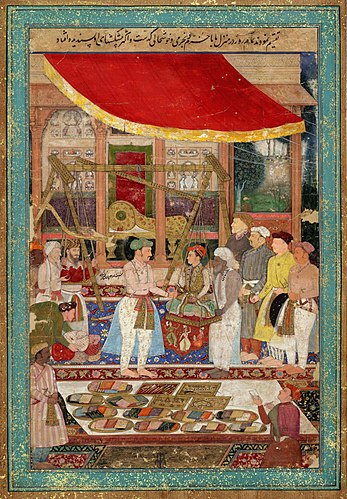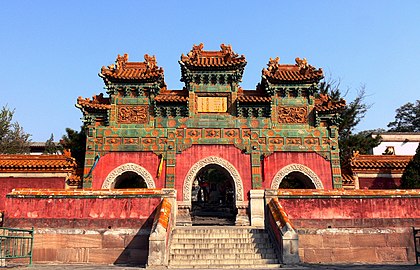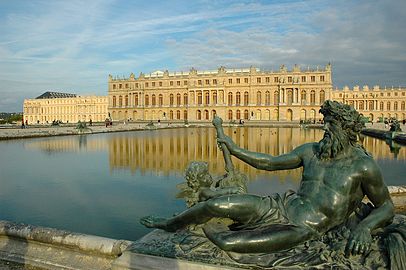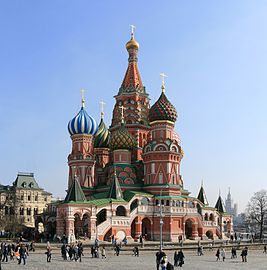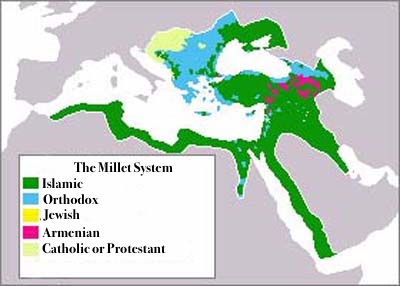Topic 3.2 Empires: Administration
Empires expanded and conquered new peoples around the world, but they often had difficulties incorporating culturally, ethnically, and religiously diverse subjects, and administrating widely dispersed territories. Agents of the European powers moved into existing trade networks around the world. In Africa and the greater Indian Ocean, nascent European empires consisted mainly of interconnected trading posts and enclaves. In the Americas, European empires moved more quickly to settlement and territorial control, responding to local demographic and commercial conditions. Moreover, the creation of European empires in the Americas quickly fostered a new Atlantic trade system that included the trans-Atlantic slave trade. Around the world, empires and states of varying sizes pursued strategies of centralization, including more efficient taxation systems that placed strains on peasant producers, sometimes prompting local rebellions. Rulers used public displays of art and architecture to legitimize state power. African states shared certain characteristics with larger Eurasian empires. Changes in African and global trading patterns strengthened some West and Central African states — especially on the coast; this led to the rise of new states and contributed to the decline of states on both the coast and in the interior. [1]
- An individual’s claim to have authority over other people is not something we humans take for granted. We need a reason to obey. Coercion and force have long been a part of political power, but we yield to them out of fear or for pragmatic reasons rather than our belief that they constitute legitimate reasons for our consent. A state has political legitimacy when subjects choose to recognize its authority because it has some intrinsic validating quality. Notions used by states to legitimize their rule in this period (1450-1750) are examples of important continuities of state-building we have seen since the River Valley Civilizations in Period I. Religion and art continued to be closely connected with the political power of states.
- An individual’s claim to have authority over other people is not something we humans take for granted. We need a reason to obey. Coercion and force have long been a part of political power, but we yield to them out of fear or for pragmatic reasons rather than our belief that they constitute legitimate reasons for our consent. A state has political legitimacy when subjects choose to recognize its authority because it has some intrinsic validating quality. Notions used by states to legitimize their rule in this period (1450-1750) are examples of important continuities of state-building we have seen since the River Valley Civilizations in Period I. Religion and art continued to be closely connected with the political power of states.
- Some examples of religious ideas legitimizing states are:
- Some examples of religious ideas legitimizing states are:
- European notions of divine right. The divine right of kings is an important political ideology in Western Europe. It maintains that the king’s authority comes from God and, as such, the king is accountable only to God for his actions. Thus it supports the idea of absolute monarchy in which the monarch’s power is not checked by any earthly agent. In Roman Catholic countries it means that the king’s power must be endorsed by the pope, a tradition that goes back to Charlemagne’s coronation in the year 800 C.E. Here, for example, is an account of the coronation of Charlemagne:
- European notions of divine right. The divine right of kings is an important political ideology in Western Europe. It maintains that the king’s authority comes from God and, as such, the king is accountable only to God for his actions. Thus it supports the idea of absolute monarchy in which the monarch’s power is not checked by any earthly agent. In Roman Catholic countries it means that the king’s power must be endorsed by the pope, a tradition that goes back to Charlemagne’s coronation in the year 800 C.E. Here, for example, is an account of the coronation of Charlemagne:
- On the most holy day of the nativity of the Lord when the king rose from praying at Mass before the tomb of blessed Peter the apostle, Pope Leo placed a crown on his head and all the Roman people cried out, "To Charles Augustus, crowned by God, great and peace-giving emperor of the Romans, life and victory.” And after the laudation he was adored by the pope in the manner of the ancient princes and, the title of Patrician being set aside, he was called emperor and Augustus. [2]
- The ideology of the divine right of kings reached its highest expression during the reign of Louis XIV of France. As Louis was consolidating his control of France, his chief theologian, Jacque Bousset, wrote a work called Politics Drawn from the Words of Holy Scripture which justified the absolute monarchy King Louis was creating. "Monarchical authority comes from God," he wrote. "Royal authority is sacred; religion and conscious demand that we obey the prince. Royal authority is absolute; the prince need render account to no one for what he orders. Even if kings fail in their duty, their charge and their ministry must be respected. . . . Prices are gods." [3] Thus monarchs of Europe--particularly Catholic Europe--justified absolute monarchy with religion.
- The Safavid's use of Shiism. The Safavids rose out of the dissolution of the Timurid Empire, the state formed by the conquests of Timur, also known as Tamerlane. After his death, Timur’s empire fell to warring family members. (One of his descendants, Babur, conquered northern India and began the Mughal Empire.) In Persia, Mesopotamia, and Eastern Anatolia, the disintegrating Timurid Empire opened the way for Shi’ite sects and Sufi brotherhoods to proliferate. Taking advantage of the absence of any centralized state, Ismail—a leader from a prominent Sufi family—conquered most of these areas in the late 15th century and began the Safavid Empire. However, despite unifying Iran (Persia), much of the population did not accept their authority. After converting to Shia Islam, Safavid leaders “sought to install Shiism as the state religion so as to command the loyalty of the population.” The result was a syncretic blend of Shiism and traditional Persian beliefs. Ismail “adopted many of the forms of Persian, pre-Islamic government, including the title of Shah.” [4] He claimed to have descended not only from the Seventh Imam, [5] but also to be the reincarnation of pre-Islamic kings and prophets.[6] Ismail's religious charisma can be seen in his poetry:
- Prostrate thyself! (Bow down)
- Pander not to Satan
- Adam has put on new clothes,
- God has come. [7]
- Prostrate thyself! (Bow down)
- The Safavid's use of Shiism. The Safavids rose out of the dissolution of the Timurid Empire, the state formed by the conquests of Timur, also known as Tamerlane. After his death, Timur’s empire fell to warring family members. (One of his descendants, Babur, conquered northern India and began the Mughal Empire.) In Persia, Mesopotamia, and Eastern Anatolia, the disintegrating Timurid Empire opened the way for Shi’ite sects and Sufi brotherhoods to proliferate. Taking advantage of the absence of any centralized state, Ismail—a leader from a prominent Sufi family—conquered most of these areas in the late 15th century and began the Safavid Empire. However, despite unifying Iran (Persia), much of the population did not accept their authority. After converting to Shia Islam, Safavid leaders “sought to install Shiism as the state religion so as to command the loyalty of the population.” The result was a syncretic blend of Shiism and traditional Persian beliefs. Ismail “adopted many of the forms of Persian, pre-Islamic government, including the title of Shah.” [4] He claimed to have descended not only from the Seventh Imam, [5] but also to be the reincarnation of pre-Islamic kings and prophets.[6] Ismail's religious charisma can be seen in his poetry:
- Subsequent Safavid leaders continued to fuse Shiism with their political power. They built mosques and appointed prayer leaders in each village to secure Shia beliefs. [8] The Safavids made their empire a safe haven for Shi’a scholars and invited many of them to migrate to their empire. These religious sages depended on the state for support and in turn recognized the legitimacy of Safavid rule. However, they did not grant them absolute rule over scholarly religious affairs[9] which meant that political and religious leadership would form a dual system of authority, as exists in Iran today.
- The Shiism of the Safavids would put them at odds with the greater Sunni community. Arab Muslim scholars were not at ease with the Safavid belief that prophecies did not end with Mohammad or that "the souls of old prophets could transmigrate into different human beings at any given time." [10] These developments also shored up the belief of the Ottomans that they were the protectors of the true form of Islam.
- The Shiism of the Safavids would put them at odds with the greater Sunni community. Arab Muslim scholars were not at ease with the Safavid belief that prophecies did not end with Mohammad or that "the souls of old prophets could transmigrate into different human beings at any given time." [10] These developments also shored up the belief of the Ottomans that they were the protectors of the true form of Islam.
- Mexica or Aztec practice of human sacrifice The sacrificial system of the Aztecs was notoriously violent. Many sacrifices were aimed at maintaining the empire’s economic and social stability and the calendar year was full of systematic sacrifices performed by groups of different tradesmen at specified times. For example, during the month of Etzalcualiztli, fishermen would sacrifice a slave to guarantee heavy yields. [11] Each month priests perform sacrifices tuned to the seasonal cycles of agriculture and rain. But the most elaborate sacrifices were performed on the top of large pyramids where thousands of captives could be killed in a single day. Warriors led their captives from battle to the temple where priests could cut open their chest and remove the heart in as little as twenty seconds. In some cases, a priest would wear the skin of a sacrificed victim for days, and on other occasions limbs from victims were cooked with dried maize and consumed at elaborate banquets.
- Historians are not in total agreement about the purpose of these bloody pageants. Some emphasize that they represent the use of terror and fear to coerce obedience to the state. Others demonstrate how the sacrifices, on which many aspects of Aztec civilization depended, maintained the power of the priests and elites classes who carried them out. They seemed also to have brought cohesiveness to the multi-ethnic and tribal components of the expanding empire. The sacrifices at the capital city of Tenochtitlan were “intended to win the loyalty of a relatively small target group, the young men who formed the core of the Aztec army.” [12]. The recognition and rewarding of young warriors provided a cohesive bond among men from varied backgrounds that minimized ethnic and kinship identities. In doing so, the sacrifices brought greater unity and loyalty to the state.
- Chinese emperor's performance of Confucian rituals Confucianism was always deeply concerned with rituals, and during the Tang dynasty leaders adapted Confucian rituals to legitimize their rule. Later, when the foreign Manchus established the Qing dynasty, they appropriated these rituals in an effort to claim the Mandate of Heaven and to elevate the importance of the emperor. Many Confucian rituals involved the imperial family. In fact, it is only a slight exaggeration to say that established rituals proscribed most everything the emperor did. For example, in the beginning of the spring the Emperor participated in an elaborate ceremony in which he plowed the first furrow of earth and planted the first seed in front of the Temple of Agriculture. [13] No farm work could begin until the emperor completed this ritual. This ceremonial act procured the good will of the gods, ensured a plentiful harvest, and linked the vigor of Chinese civilization to the actions of the emperor. The Qing, who were not Chinese but Manchus, adopted this Confucian ritual to connect themselves to the tradition of Chinese emperors who preceded them. It was an act of legitimization.
- Chinese emperor's performance of Confucian rituals Confucianism was always deeply concerned with rituals, and during the Tang dynasty leaders adapted Confucian rituals to legitimize their rule. Later, when the foreign Manchus established the Qing dynasty, they appropriated these rituals in an effort to claim the Mandate of Heaven and to elevate the importance of the emperor. Many Confucian rituals involved the imperial family. In fact, it is only a slight exaggeration to say that established rituals proscribed most everything the emperor did. For example, in the beginning of the spring the Emperor participated in an elaborate ceremony in which he plowed the first furrow of earth and planted the first seed in front of the Temple of Agriculture. [13] No farm work could begin until the emperor completed this ritual. This ceremonial act procured the good will of the gods, ensured a plentiful harvest, and linked the vigor of Chinese civilization to the actions of the emperor. The Qing, who were not Chinese but Manchus, adopted this Confucian ritual to connect themselves to the tradition of Chinese emperors who preceded them. It was an act of legitimization.
- There were other ways the ruling dynasty used Confucian ritual to legitimize their rule. The sacrifices to Heaven, performed in the northern suburbs of the capital during the summer solstice and in the southern during the summer solstice, grew to be the most important rituals. Many rituals of ancestor worship were absorbed into the sacrifices made to Heaven thus creating a close link between the spirits of the ancestors and Heaven. In fact, the Emperor's ancestors became a link between Heaven and the imperial family. By publicly performing these rituals twice a year, the Emperor was reaffirming the Mandate of Heaven. [14]
- Some examples of art legitimizing states are:
- Ottoman miniature painting Influenced by Persian traditions, Ottoman artists developed a rich tradition of courtly art known as miniature paining. As one of the "arts of the book" (along with calligraphy), miniature painting was used to illustrate and embellish government sponsored manuscripts. While earlier Persian paintings depicted mythical heroes and images of paradise, Ottomans used this art to emphasize their imperial conquests. After his defeat of Constantinople in 1453, for example, Mehmed II adopted visual art to perpetuate his "image as a world conqueror" and identify his capture of the city with some of the most important achievements of past conquests, particularly those of Alexander the Great. Mehmet built an imperial scriptorium and solicited Renaissance artists from Italy to come and share their expertise. Ottoman miniature painting reached its peak in the 16th century when the empire created an official post of court historian. Presiding over a team of writers, calligraphers, illustrators and miniaturists, the court historian produced elegant works of Ottoman imperial history. By the 18th century, when Ottoman conquests came to an end, miniature painting focused on portraits of sultans and illustrations of imperial genealogies. A few of them traced the sultans' genealogy back through many of the most significant prophets to Adam in the Garden of Eden. Regardless of their topical changes, miniature painting was used by the Ottoman government to reinforce their authority and legitimacy. [15]
- Qing imperial portraits We saw above how important rituals were to the Chinese imperial court. During the Qing dynasty these ceremonies included the use of art. Imperial portraits of emperors adorned many of the palaces inside the Forbidden City and were an important part of funeral rituals when an emperor died. We see vestiges of ancestor veneration in the fact that some emperors performed ceremonies before portraits of previous leaders of their dynasty and even kowtowed to these portraits. [16] In the public sphere, imperial portraits were utilized to enhance the legitimacy of the emperor. Portraits of emperor Kangxi, for example, often show him surrounded by books or holding a book in his hands, a representation that serves the imperial Confucian ideology that scholarship and command of knowledge merit legitimacy for an emperor. [17] Legitimacy was a crucial factor for Emperor Kangxi. As a Manchu he needed to gain respect from ethnic Chinese; promoting himself as an accomplished scholar helped win the scholar bureaucrats and gain the Mandate of Heaven in the eyes of many Chinese.
- Qing imperial portraits We saw above how important rituals were to the Chinese imperial court. During the Qing dynasty these ceremonies included the use of art. Imperial portraits of emperors adorned many of the palaces inside the Forbidden City and were an important part of funeral rituals when an emperor died. We see vestiges of ancestor veneration in the fact that some emperors performed ceremonies before portraits of previous leaders of their dynasty and even kowtowed to these portraits. [16] In the public sphere, imperial portraits were utilized to enhance the legitimacy of the emperor. Portraits of emperor Kangxi, for example, often show him surrounded by books or holding a book in his hands, a representation that serves the imperial Confucian ideology that scholarship and command of knowledge merit legitimacy for an emperor. [17] Legitimacy was a crucial factor for Emperor Kangxi. As a Manchu he needed to gain respect from ethnic Chinese; promoting himself as an accomplished scholar helped win the scholar bureaucrats and gain the Mandate of Heaven in the eyes of many Chinese.
Rulers Using Art: An Important Continuity in State Building
- Augustus of Prima Porta. When Caesar Augustus came to power he was welcomed by the monarchists but rejected by the conservative republicans who wanted power to remain with the traditional patrician families. Augustus commissioned this work of art to assuage the fears of those republicans who believed he was a warmonger trying to consolidate his own power at the expense of the old republic. Thus he is shown raising his hand like a strong leader but not brandishing a sword. He is poised for movement but not in a threatening or aggressive way. On his breastplate is the scene of the Parthians surrendering to Rome, one of Augustus' most important military achievements that overturned a previous humiliation by the Parthians. But this was a necessary military endeavor; the gods look on approvingly, suggesting that Augustus carries out their will. Overall this statue of political propaganda showed Augustus as he wanted to be known rather than how he actually was.
- The Qianlong Emperor as the Bodhisattva Mafijusrt. During the reign of the Qianlong Emperor (1736-1796) the Qing dynasty expanded the borders of China farther than they had ever been before. China also became much more multi-cultural than it had ever been. The Qianlong Emperor used imperial portraits to represent himself to each region in the culture and dress of that region. To the ethnic Chinese (the Han) he had himself painted as a great scholar and promoter of Chinese values;[18] to the Mongols of Central Asia, he was depicted as a traditional warrior of the steppes. [19] The portrait above shows him pictured as the best known bodhisattva of Tibetan Buddhism, surrounded by Buddhist symbols. For example, he "raises his right hand in the gesture of argument while supporting the wheel of the law in his left. He also holds two stems of lotus blossoms, which serve as platforms for a sutra and a sword, the attributes of Manjusri. He is pictured among 108 deities . . . who represent his Buddhist lineage." [20]
- Emperor Jahangir weighs Prince Khurram. This miniature shows Mughal emperor Jahangir, son of Akbar, weighing his son against valuables such as precious gems, gold, or other important goods. In this tradition, the son's weight of these goods was given to holy men, used to fund building projects, or distributed to the poor. The picture and the tradition it depicts were part of Akbar's project of religious tolerance. The "weighing of the ruler's son" was Hindu in origin and the distribution of wealth to the poor resembled the Muslim practice of almsgiving, one of the pillars of Islam. As Muslim rulers of a predominately Hindu empire, Akbar and Jahangir were dedicated to forging strategic alliances with local Hindu rulers. This painting shows Muslim and Hindu leaders participating together in the ritual. It also demonstrates the wealth, power, and benevolence of the Mughals. [21]
- Napoleon in his Study. After a little more than a decade after the French Revolution began, Napoleon Bonaparte had worked his way through the military ranks and proved himself to be a brilliant general. In 1804, taking advantage of the uncertainties and political vacuum of the revolutionary era, Napoleon made himself emperor of France. This portrait depicts Napoleon Bonaparte in that year. The artists emphasizes his role as a tireless and productive statesman. His sword is close by, but at rest on the gilded chair. The candle behind him has burned down to a stump and the clock on the wall reads 4:13 a.m. The object of his tireless labor is on the table, the Code of Napoleon, and the book on the floor is Plutarch's Lives of the Noble Greeks and Romans. Its presence suggests Napoleon be included with the great leaders of antiquity.[22]
State-Building and Monumental Architecture
- B. As we have seen since the earliest empires, the territorial growth of states invites the problems of ruling a large multi-ethnic empire. The most successful states found ways to incorporate ethnic and cultural minorities in a way that permitted the state to benefit from their presence while at the same time limiting their political influence. Between 1450 and 1750 there were several examples of states attempting this balancing act.
- B. As we have seen since the earliest empires, the territorial growth of states invites the problems of ruling a large multi-ethnic empire. The most successful states found ways to incorporate ethnic and cultural minorities in a way that permitted the state to benefit from their presence while at the same time limiting their political influence. Between 1450 and 1750 there were several examples of states attempting this balancing act.
- Ottomans and their non-Muslim subjects After the fall of Constantinople in 1453 the Ottoman empire absorbed the former Byzantine lands and the number of Christians under Ottoman rule greatly increased. By the middle of the 1500s the non-Muslim population of the empire reached about 40%. [23] To deal with the increasing diversity of the Empire, Mehmet II introduced what would later be called the millet system. Each millet, from the Arabic word for nation, was an autonomous zone made up of a particular religious group. [24] Each millet was permitted to chose its own leader, practice its own religion, and live by its own religious orders or rules; Sharia law did not have effect within a non-Muslim millet. For example, Orthodox Christians and Jews each had their own respective millets and lived according to their own customs. An influence on the development of non-Muslim millets was that members were not allowed to hold military or political posts. Thus their impact on the Islamic character of the Empire was limited. Consequently, Christian and Jewish millets turned to the development of craft skills, finance and brokerage. [25] They became important intermediaries in trade negotiations with merchants outside the empire benefitting the Ottoman economy.
- Ottomans and their non-Muslim subjects After the fall of Constantinople in 1453 the Ottoman empire absorbed the former Byzantine lands and the number of Christians under Ottoman rule greatly increased. By the middle of the 1500s the non-Muslim population of the empire reached about 40%. [23] To deal with the increasing diversity of the Empire, Mehmet II introduced what would later be called the millet system. Each millet, from the Arabic word for nation, was an autonomous zone made up of a particular religious group. [24] Each millet was permitted to chose its own leader, practice its own religion, and live by its own religious orders or rules; Sharia law did not have effect within a non-Muslim millet. For example, Orthodox Christians and Jews each had their own respective millets and lived according to their own customs. An influence on the development of non-Muslim millets was that members were not allowed to hold military or political posts. Thus their impact on the Islamic character of the Empire was limited. Consequently, Christian and Jewish millets turned to the development of craft skills, finance and brokerage. [25] They became important intermediaries in trade negotiations with merchants outside the empire benefitting the Ottoman economy.
- Manchus and their Chinese subjects As mentioned above, the Qing dynasty expanded Chinese territory larger than it ever had been before and ruled a population of 450 million people. [26] Unlike previous Chinese dynasties, the Qing did not impose Chinese language or culture over their subjects and thought of China as just one part of a larger Manchu empire. [27] They adopted a policy of "ruling different people differently," allowing local languages, customs, and in some cases, permitting local leaders to maintain leadership positions. Some groups had more privileges than others. Manchus, of course, were the most favored group but Chinese were allowed to take governing posts in the Confucian bureaucracy along with Manchus. The highest point to which a Chinese civil servant could rise was an executive position known as a "grand secretary." These administrators had no policy making power; however, they served as channels of communication "by ratifying, and forwarding 'memorials,' reports sent to the emperor from other central and field offices." [28] The highest central administrative positions in Beijing, of course, were reserved for Manchus. Allowing Chinese to earn positions in the bureaucracy through civil service examinations rendered Manchu rule more acceptable for Chinese. And to prevent Chinese from dominating the bureaucracy, it was much easier for Manchus to gain appointments and rise through the ranks.
- Manchus and their Chinese subjects As mentioned above, the Qing dynasty expanded Chinese territory larger than it ever had been before and ruled a population of 450 million people. [26] Unlike previous Chinese dynasties, the Qing did not impose Chinese language or culture over their subjects and thought of China as just one part of a larger Manchu empire. [27] They adopted a policy of "ruling different people differently," allowing local languages, customs, and in some cases, permitting local leaders to maintain leadership positions. Some groups had more privileges than others. Manchus, of course, were the most favored group but Chinese were allowed to take governing posts in the Confucian bureaucracy along with Manchus. The highest point to which a Chinese civil servant could rise was an executive position known as a "grand secretary." These administrators had no policy making power; however, they served as channels of communication "by ratifying, and forwarding 'memorials,' reports sent to the emperor from other central and field offices." [28] The highest central administrative positions in Beijing, of course, were reserved for Manchus. Allowing Chinese to earn positions in the bureaucracy through civil service examinations rendered Manchu rule more acceptable for Chinese. And to prevent Chinese from dominating the bureaucracy, it was much easier for Manchus to gain appointments and rise through the ranks.
- Spanish America and the República de Indios In colonial America, Spanish administrators sought to adapt and impose the social structure of Iberia. Back home, society was organized into large corporate groups with different levels of rights and privileges adhering to each group rather than to individuals. In the New World the Spanish likewise divided the population into two primary groups. The first group was the república de espanoles comprised of all Iberian born people, Spanish creoles, and anyone else of mixed Spanish race. The other group was the república de indios made up of the non mestizo indigenous population. This separation was initially made to protect indigenous people from the harness of the Spaniards; [29] they were divided into independent communities ruled by their own elites, and they enjoyed their own separate system of courts and laws. The system failed because of Spanish demand for indigenous labor. República de Indios were required to supply labor through the mita system to American silver mines. The became the target of the labor draft in Mexico known as the repartimiento which supplied labor to commercial farms, mines, and select private enterprises. Their required tribute payments became an important source of revenue for the Spanish colonial governments. The continued flow of people between the república de espanoles and the república de indios eventually blurred their distinctive identities. [30]
- Spanish America and the República de Indios In colonial America, Spanish administrators sought to adapt and impose the social structure of Iberia. Back home, society was organized into large corporate groups with different levels of rights and privileges adhering to each group rather than to individuals. In the New World the Spanish likewise divided the population into two primary groups. The first group was the república de espanoles comprised of all Iberian born people, Spanish creoles, and anyone else of mixed Spanish race. The other group was the república de indios made up of the non mestizo indigenous population. This separation was initially made to protect indigenous people from the harness of the Spaniards; [29] they were divided into independent communities ruled by their own elites, and they enjoyed their own separate system of courts and laws. The system failed because of Spanish demand for indigenous labor. República de Indios were required to supply labor through the mita system to American silver mines. The became the target of the labor draft in Mexico known as the repartimiento which supplied labor to commercial farms, mines, and select private enterprises. Their required tribute payments became an important source of revenue for the Spanish colonial governments. The continued flow of people between the república de espanoles and the república de indios eventually blurred their distinctive identities. [30]
- ↑ http://media.collegeboard.com/digitalServices/pdf/ap/ap-world-history-course-and-exam-description.pdf
- ↑ The Crises of Church and State: 150-1300, Brian Tierney, (1988) p. 23.
- ↑ Early Modern Europe, 1450-1789. Volume 2 of Cambridge History of Europe, Merry E. Wiesner, (2013) p. 316.
- ↑ Understanding Shiite Leadership, p. 16.
- ↑ Understanding Shiite Leadership: The Art of the Middle Ground in Iran and Lebanon, Shaul Mishal, Ori Goldberg, (2014) p. 16.
- ↑ The Safavid Synthesis: From Qizilbash to the Imamite Shi'ism, Kathryn Babayan. Iranian Studies, vol 27, no 1-4, 1995, p. 135. Retrieved from https://www.academia.edu/1064965/The_Safavid_Synthesis_From_Qizilbash_Islam_to_Imamite_Shiism
- ↑ The Safavid Synthesis: From Qizilbash to the Imamite Shi'ism, p. 135.
- ↑ 'Safavid Iran: Rebirth of a Persian Empire, Andrew J Newman, (2012) p. 38.
- ↑ Understanding Shiite Leadership, p. 16.
- ↑ The Safavid Synthesis: From Qizilbash to the Imamite Shi'ism, Kathryn Babayan.
- ↑ Empires, Susan E. Alcock, et al, (2009) p. 298.
- ↑ Empires, (2009) p. 309.
- ↑ Of Body and Brush: Grand Sacrifice as Text/Performance in Eighteenth-Century China, Angela Zito (1997) p.26.
- ↑ Offerings of Jade and Silk: Ritual and Symbol in the Legitimation of the T'ang Dynasty," Howard J. Wechsler, (1985) , pp. 107-122.
- ↑ Encyclopedia of the Ottoman Empire,"Ga ́bor A ́goston, Bruce Alan Masters, (2010) , pp. 265-270.
- ↑ The Last Emperors: A Social History of Qing Imperial Institutions By Evelyn S. Rawski, (1998) , p. 286.
- ↑ Imperial Illusions: Crossing Pictorial Boundaries in the Qing Palaces," Kristina Kleutghen, (2015) , p. 50.
- ↑ http://decodedpast.com/tibetan-buddhism-politics-qing-dynasty/14473
- ↑ http://www.learn.columbia.edu/nanxuntu/html/emperors/
- ↑ Worshiping the Ancestors: Chinese Commemorative Portraits, Jan Stuart and Evelyn Sakakida Rawski (2001), portrait 119.
- ↑ http://www.teachinghistory100.org/objects/about_the_object/mughal_painting
- ↑ http://www.nga.gov/content/ngaweb/Collection/highlights/highlight46114.html
- ↑ Ottoman Brothers: Muslims, Christians, and Jews in Early Twentieth-Century Palestine, Michelle Campos (2011), p. 9.
- ↑ http://lostislamichistory.com/non-muslim-rights-in-the-ottoman-empire/
- ↑ Introduction to the Modern Economic History of the Middle East, Z. Y. Hershlag (1997) p. 25.
- ↑ Empires and Bureaucracy in World History: From Late Antiquity to the Twentieth Century, Peter Crooks, Timothy H. Parsons (2016) p. 33.
- ↑ Voyages in World History, Valerie Hansen, Kenneth R. Curtis (2016) p. 596.
- ↑ China's Last Empire: The Great Qing, William T. Rowe (2010) p. 34.
- ↑ Conquest and Survival in Colonial Guatemala, Fourth Edition: A Historical Geography of the Cuchumatán Highlands, 1500-1839, W. George Lovell (2015).
- ↑ Iberia and the Americas: Culture, Politics, and History: A Multidisciplinary Encyclopedia, vol 1. John Michael Francis (2006) pp. 901-902.


